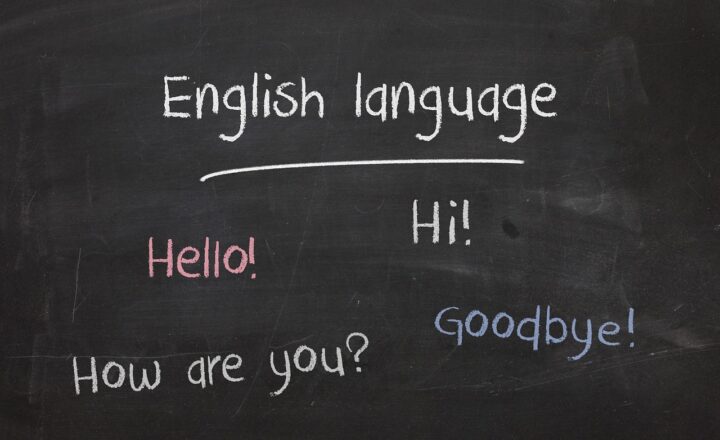
Learning a new language can seem like a daunting task, but what if we told you that some languages are easier to learn than you might believe? In this article, we will explore ten languages that are not only accessible to beginners but can also be mastered with relative ease. Whether you are looking to expand your career opportunities, connect with different cultures, or simply engage in a new hobby, acquiring a new language can be a rewarding experience.
1. Spanish
Spanish is one of the most widely spoken languages in the world, and it is also one of the easiest for English speakers to learn. With a phonetic structure that makes pronunciation straightforward, Spanish follows consistent grammatical rules. Moreover, the alphabet is the same as English, eliminating the need to learn new characters.
Key Features:
– Phonetic spelling: Spanish is read as it is written.
– Grammatical consistency: Fewer exceptions compared to English.
– Cultural exposure: Movies, music, and other media make it easy to practice.
2. French
French is not only a beautiful language but also relatively simple for English speakers, thanks to the vast number of cognates (words that look and sound similar in both languages). Although pronunciation may pose a slight challenge, French grammar is more predictable than that of other languages. Plus, the global presence of the French language offers ample opportunity for practice.
Key Features:
– Many shared vocabulary words with English.
– Structured grammar and consistent verb conjugation rules.
– Cultural immersion through films, cuisine, and literature.
3. Italian
Italian is often regarded as a delightful language, appealing to those interested in culture, art, and cuisine. It’s a phonetic language like Spanish, which makes pronunciation simpler as each letter has a specific sound. Furthermore, Italian shares many grammatical features with other Romance languages, making it easier to learn if you have prior knowledge of them.
Key Features:
– Musicality in pronunciation: Many learners find it enjoyable to speak.
– Straightforward grammar with predictable verb endings.
– Rich cultural significance in arts and history.
4. Portuguese
Portuguese is another Romance language with significant similarities to Spanish and French. With around 250 million speakers globally, it’s a valuable language to learn for both personal and professional reasons. Portuguese grammar is not overly complex, and its phonetics are fairly logical, especially for speakers who have learned Spanish.
Key Features:
– Similarities with Spanish for easier comparative learning.
– Rich in culture, offering exposure through music and literature.
– Growing global demand in business and tourism sectors.
5. Dutch
Dutch is often considered one of the easiest Germanic languages for English speakers to learn due to its linguistic similarities. The vocabulary includes numerous familiar words, and the grammar, while having some complexities, is straightforward for those with a basic understanding of English.
Key Features:
– Shared vocabulary with English and German.
– Logical grammar rules that are less intensive than those of German.
– Exposure through Dutch media and literature for practice.
6. Swedish
Swedish boasts a relatively simple structure, and its similarity to English makes it easier to grasp. The grammar rules are straightforward, and the pronunciation can be intuitively learned with practice. Swedish is also known for its relaxed attitude towards language, making it an enjoyable language to learn and speak.
Key Features:
– Simple grammar with relatively few rules compared to English.
– Strong English influences in vocabulary.
– Access to a wealth of pop culture that encourages learning.
7. Norwegian
Norwegian is praised for its straightforward grammar and vocabulary that closely resembles English. With two written forms (Bokmål and Nynorsk), learners can choose their preferred method. Moreover, Norwegian pronunciation rules are relatively consistent, allowing learners to communicate effectively early on.
Key Features:
– Similar vocabulary and syntax to English.
– Simple reading and writing system due to its logical structure.
– Easy access to Norwegian media for practice.
8. Esperanto
Esperanto was designed as a universal language that is easy to learn, combining elements from various languages. The vocabulary is drawn from several languages, making it relatively accessible, and the grammar has far fewer exceptions compared to natural languages. With a purpose of promoting international communication, learning Esperanto can be a fun and engaging experience.
Key Features:
– Designed to be simple, with consistent rules.
– Foster a global sense of community among speakers.
– Offers cross-cultural learning opportunities.
9. Romanian
Romanian, while considered a Romance language, has retained unique features compared to its counterparts. Its Latin roots make it relatable to speakers of other Romance languages. While Romanian has a few irregularities, many find its structure to be much more accessible compared to other languages in this family.
Key Features:
– Vocabulary shares similarities with Italian, Spanish, and French.
– A delicate phonetic structure that’s enjoyable to learn.
– Gain insights into Eastern European culture through the language.
10. Swahili
Swahili is the most widely spoken language in Africa, known for its simple grammar and phonetic pronunciation. With a straightforward structure, learners often find it easier to comprehend compared to many European languages. Additionally, Swahili is rich in cultural significance and represents a fascinating entry point into African languages.
Key Features:
– Phonetically spelled, making it easier to read and speak.
– Limited use of verb conjugation compared to other languages.
– Offers a window into the diverse cultures of East Africa.
Conclusion
Learning a new language opens doors to cultural understanding, career opportunities, and personal growth. The languages highlighted in this article demonstrate that not all languages are difficult to learn. By focusing on those that are more accessible, you can embark on your language-learning journey with confidence. Embrace the challenge, enjoy the process, and discover the beauty of communication beyond borders.
Feeling inspired to take on a new language? Choose one of the ten languages discussed here and start your journey today! Remember, consistency is key, and immersing yourself in the culture will enhance your learning experience.








